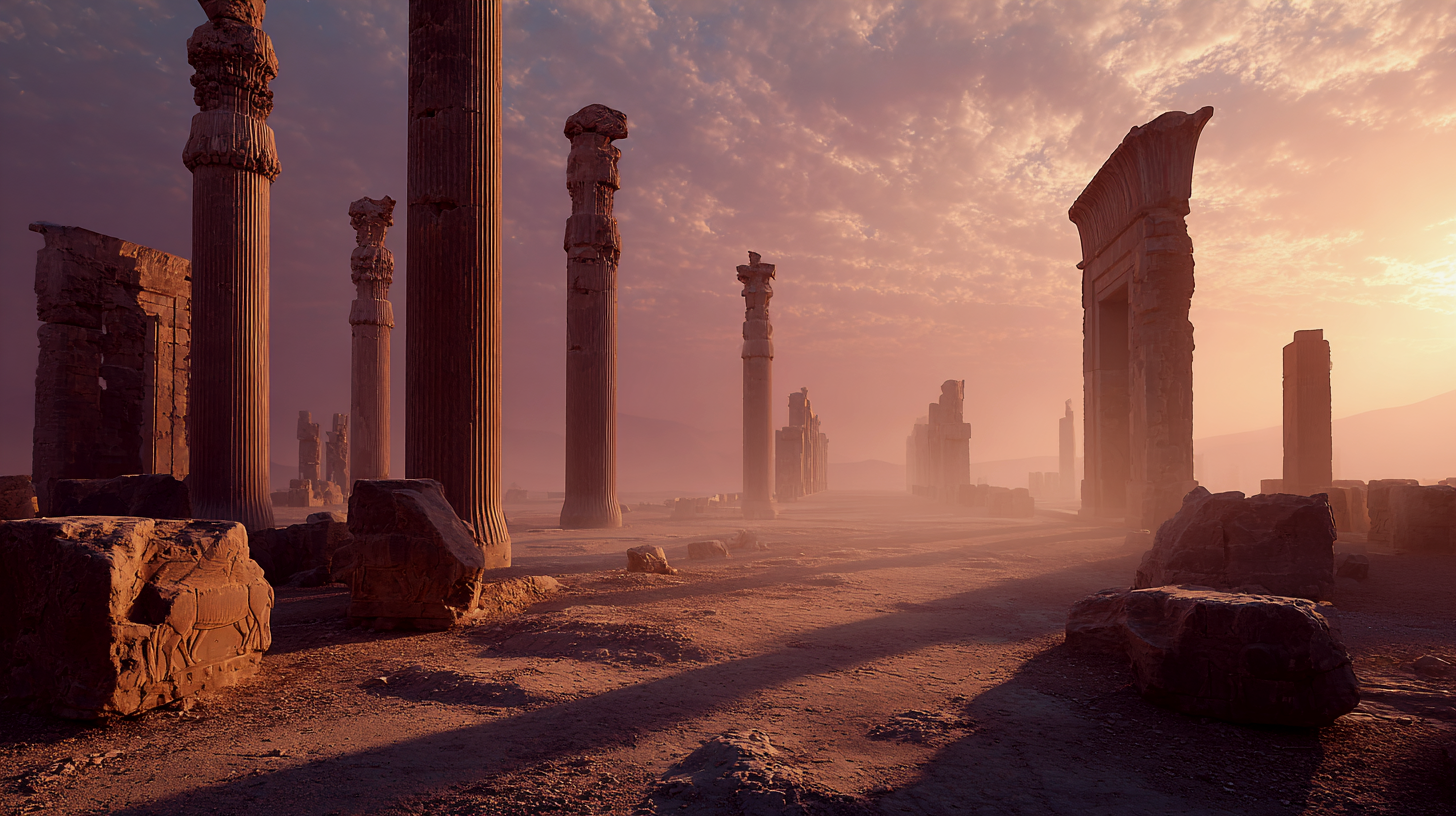PersepolisProject
Virtual Reality (VR) Storytelling
My role
Creative Director & Experience Designer
Location & year
Los Angeles, USA - 2025

During my master's studies, I kept noticing how much of what we celebrate in art is what has survived. Museums and galleries show us what still exists, what time and conflict have spared.
But I couldn’t stop thinking about the masterpieces that didn’t make it. The ones lost to war, stolen, or destroyed. Their absence felt loud. I kept wondering if there was a way to bring them back, to let people experience what is no longer visible.
Virtual reality gave me that possibility. By putting on a headset, we are no longer limited to what remains. We can step into spaces that have vanished and stand in moments that history has tried to erase.
Meet our team
About the project
In Remembrance of Persepolis is an immersive VR experience built for Meta Quest 3. It reconstructs the ancient city of Persepolis at the height of its power and guides users through its ceremonial spaces as they once existed. Over time, the environment shifts and dissolves, leading the user into the present-day ruins after the fire happening.
Built in Unreal Engine 5 as my capstone project during my master’s in Narrative and Emerging Media at Arizona State University, the experience brings together my architecture, user experience design, and immersive technology skills to let the place live once again and allow users to step into what is gone forever.
What is Persepolis
Persepolis was the ceremonial capital of the Achaemenid Empire, built more than 2,500 years ago in Iran. It was a centre of power, art, and diplomacy, known for its monumental columns, detailed stone reliefs, and vast ceremonial spaces.
In 330 BCE, the city was burned during the invasion of Alexander the Great. What remains today are ruins scattered across the desert near the city of Shiraz. These fragments carry both beauty and absence. Today, Persepolis is a major tourist destination, and many people continue to visit the site in person to walk among its ruins.
Persepolis is recognized as a UNESCO World Heritage Site. For many Iranians, including myself, it is more than a historical location. It is a cultural memory that speaks to identity, loss, and continuity.
Why I Made This
I grew up with Persepolis as more than a historic site. It was part of my cultural identity. In Iran, from childhood we were taught to appreciate our culture, and in school we learned the importance of Persepolis in our history class. Every Persian person carries an emotional connection to it, and when I finally visited years ago, I felt the weight of what had been lost. The silence, the fractured stones, and the heat made absence feel alive, not like a museum but like a wound.
During my bachelor’s in architectural engineering, I studied every detail of this site in depth, which deepened my understanding of its scale, design, and meaning. That foundation, combined with my personal connection, stayed with me, and when I turned to immersive media I knew Persepolis was the story I needed to tell. I was not trying to rebuild monuments, but to preserve the atmosphere of loss and give others the chance to feel what I once felt.

Design Goals
I approached this project as an emotional space.
My goals were to:
User Experience Principles
The experience was designed around stillness, not input. Users are encouraged to pause, observe, and let the space unfold around them. Narration emerges through proximity rather than interaction, creating a sense of discovery instead of instruction. There is no defined beginning or end, only emotional pacing shaped by the user’s movement. Silence and ambiguity are part of the design, allowing each person to interpret the experience in their own way. I started creating user journey map and production sheet according to the story flow.
What I Did
After finishing my production sheet, I built the environment in Unreal Engine and modelled architectural elements in Blender to evoke a space shaped by memory and absence. Every part of the experience was designed to create a quiet emotional rhythm, where movement through the space reveals subtle shifts in sound and light. My focus was on letting the environment speak slowly and intentionally, making the user feel not just present, but implicated in the silence of what was lost.
I collaborated with developer Evan Siegal and 3D artist Jet Olano to bring depth, technical refinement, and performance optimization to the project. The narration, written and directed by me, was voiced in English by Nadie Naidoo and placed throughout the environment to guide the user through layered fragments of memory. Throughout development, I received ongoing feedback from Dr. Nonny de la Peña and Mary Matheson, both award-winning XR creators and faculty mentors. Their insight helped shape the emotional precision and integrity of the work.
Reflection
This project taught me how to design with feeling as the starting point. I learned to prioritize atmosphere over mechanics and to trust that presence can carry meaning without explanation. Working in VR challenged me to think differently about usability, pacing, and interaction. I had to let go of control and let the space speak for itself. It was a reminder that sometimes the most powerful experiences do not tell the user what to think — they give them space to feel.
Where It’s Going
In Remembrance of Persepolis is the starting point for a larger body of work focused on immersive cultural memory. It is now the first room in UnMuseum project, a virtual archive I am building to preserve lost, stolen, and erased cultural artifacts through presence and spatial storytelling. This project shaped how I approach VR as a medium for empathy, silence, and reflection. It taught me that immersive design can hold space for grief without needing to resolve it.



















